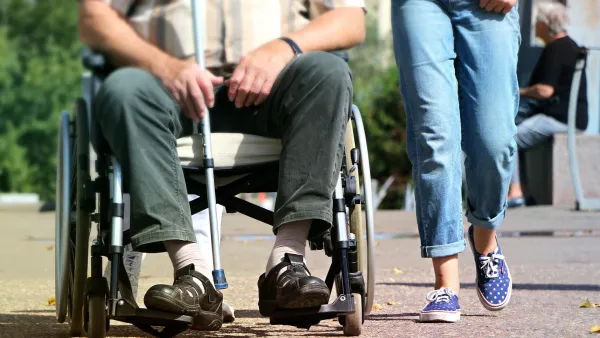The latest edition of the AARP Livability Index reveals the U.S. regions with more of the kinds of neighborhoods that offer quality of life benefits for residents of all ages.

Whitney Airgood-Obycki and Jennifer Molinsky share insights from the latest AARP Livability Index, co-authored with the Joint Center for Housing Studies of Harvard University.
"The AARP Livability Index offers a multifaceted approach to understanding what makes communities livable for people of all ages. The index is composed of seven categories: engagement, environment, health, housing, neighborhood, opportunity, and transportation. Each category includes several metrics drawn from publicly available data sources," according to the article's explanation of the Livability Index.
Among the geographic themes to emerge from the study are that the Northeast and the Midwest tend to have the most livable neighborhoods, according to Airgood-Obycki and Molinsky. More specifically: "In the Northeast region, 32 percent of neighborhoods are in the top national quintile, as are 24 percent of those in the Midwest, 20 percent in the West, and just 9 percent in the South."
"On average, block groups in the Northeast also have the highest overall livability score of 53.8, nearly 5 points higher than the average of 49.0 in the South. Northeastern communities score higher than all other regions in three categories: engagement, neighborhood, and transportation."
The article concludes with a call to action: that all neighborhoods can be livable, no matter where they are found. "The great benefit of the Index is that it enables communities to recognize the features they already have and identify areas for improvement."
FULL STORY: THE GEOGRAPHY OF LIVABILITY: INSIGHTS FROM AARP’S LIVABILITY INDEX

National Parks Layoffs Will Cause Communities to Lose Billions
Thousands of essential park workers were laid off this week, just before the busy spring break season.

Retro-silient?: America’s First “Eco-burb,” The Woodlands Turns 50
A master-planned community north of Houston offers lessons on green infrastructure and resilient design, but falls short of its founder’s lofty affordability and walkability goals.

Delivering for America Plan Will Downgrade Mail Service in at Least 49.5 Percent of Zip Codes
Republican and Democrat lawmakers criticize the plan for its disproportionate negative impact on rural communities.

Test News Post 1
This is a summary

Test News Headline 46
Test for the image on the front page.

Balancing Bombs and Butterflies: How the National Guard Protects a Rare Species
The National Guard at Fort Indiantown Gap uses GIS technology and land management strategies to balance military training with conservation efforts, ensuring the survival of the rare eastern regal fritillary butterfly.
Urban Design for Planners 1: Software Tools
This six-course series explores essential urban design concepts using open source software and equips planners with the tools they need to participate fully in the urban design process.
Planning for Universal Design
Learn the tools for implementing Universal Design in planning regulations.
EMC Planning Group, Inc.
Planetizen
Planetizen
Mpact (formerly Rail~Volution)
Great Falls Development Authority, Inc.
HUDs Office of Policy Development and Research
NYU Wagner Graduate School of Public Service




























